-
Where Asbestos May Be Found
Asbestos symptoms can be dangerous and deadly, and asbestos testing in San Francisco may be necessary to limit your risk of asbestos exposure. This hazardous material can be found in many different places, such as auto parts, cement, tiles, and textiles that were manufactured prior to 1980. The most common site of asbestos exposure is in homes, apartment buildings, and businesses that were built before 1980.
Watch this video to learn more about how and where asbestos exposure is most likely to occur. Anyone who lives, works, or frequently visits a building that contains asbestos is at risk for asbestos exposure and asbestos symptoms.
-
Signs That Your Sewer Line May Be Clogged
A sewer line clog can cause raw sewage to back up into the drains of your home, creating an unhealthy and unsafe environment. If you suspect that you have a clogged sewer line, or if you’ve recently performed raw sewage remediation in your home, it may be necessary to perform bacteria testing in San Francisco to ensure that no harmful bacteria are present. Here are the most common signs that your sewer line may be clogged, and that bacteria testing may be necessary.
Raw Sewage Backup
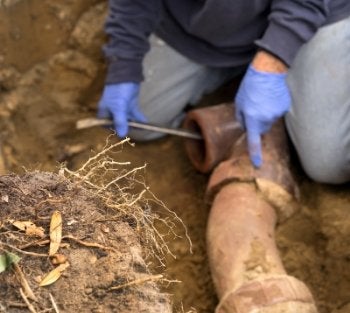
The most telling sign of a sewer line clog is a backup of raw sewage into your drains. If your main sewer line is blocked, the water, paper products, and waste won’t be able to travel down your sewer line. If you flush your toilet, the sewer line backup will cause raw sewage to bubble up through your shower or bathtub drain. If you use your washing machine, your shower drain or toilet will begin overflowing. If you run your bathroom sink, your toilet water may begin to rise and bubble up. This raw sewage puts you and your family at risk of significant health problems such as mold symptoms, as it harbors dangerous bacteria that can become airborne, or may infect you through physical contact. This is why it’s crucial that you consult an expert for bacteria testing both before and after raw sewage remediation.Multiple Drains Are Clogged at Once
Another warning sign of a sewer line clog is that multiple drains in your home will become clogged at the same time. Your toilet, bathtub, and shower will all either drain very slowly, or won’t drain at all, causing flooding and overflows. If your drains are all clogged and plunging or snaking them doesn’t provide relief, then you probably have a clogged sewer line.Strange Sounds and Odors Throughout Your Home
A sewer line clog will cause your drains to consistently make gurgling or bubbling sounds when plumbing is used. You will also notice a strong smell of sulfur or general noxious odors throughout your home. Mold symptoms are another common sign of plumbing problems. -
A Look at the History of Lead Paint
The use of lead paint in San Francisco began during Colonial times, and peaked in 1922. At the time, there was little knowledge of the danger of lead exposure and lead poisoning symptoms. Because lead paint was durable and washable, the interiors of many buildings and homes contained lead paint. By 1951, lead testing revealed the dangers of prolonged exposure to lead paint.
The first city to ban the use of lead paint was Baltimore, in 1951. By 1955, public health officials developed a national standard that allowed manufacturers to voluntarily limit their usage of lead in their interior paint. This caused a significant decline in the manufacture and use of interior and exterior lead paint throughout the 1950s and 1960s.
In 1971, the government passed the Federal Lead Poisoning Prevention Act. It wasn’t until the late 1970s that lead surveys and lead paint testing confirmed that lead poisoning symptoms could be caused by exposure to household dust. In 1978, the federal government banned the consumer use of lead paint. Homes and buildings constructed prior to 1978 should undergo thorough lead surveys and lead paint testing to ensure that they are safe.

-
Answers to Your Questions About Asbestos
If you work or live in a building that was constructed before 1980, you may be at risk of asbestos exposure in San Francisco . Today, asbestos exposure is a known cause of many illnesses and diseases, and asbestos use is banned or severely restricted in most countries. Here are the answers to some frequently asked questions about asbestos.
What is Asbestos?
Asbestos is a naturally occurringmineral in the earth. It’s known for its strength, insulating power, heat
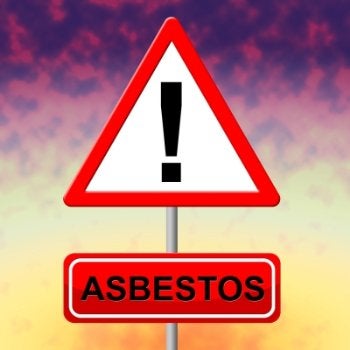
resistance, and versatility. According to the Environmental Protection Agency, there are six different types of asbestos that were once used in automotive parts, tiles, cement, and textiles. Almost 90% of the asbestos that was used to produce these products was chrysotile asbestos. Manufacturers began using asbestos in the 1800s and it wasn’t until the 1970s that the world became fully aware of its dangers. Now, products can only contain 1% of asbestos in order to be considered safe.
How Does Asbestos Exposure Occur?
There are 75 different jobs in America that are known to expose employees to asbestos. The majority of cases of asbestos exposure occur on the job, but there are also homes and apartments that still contain asbestos. Asbestos can be found in the floor tiles, roofs, furnaces, plumbing, appliances, fireplaces, and window caulking of buildings constructed before the 1980s. Asbestos exposure occurs when normal wear and tear dislodges asbestos fibers, allowing them to become airborne. Anyone in the room or building is at risk for breathing in the fibers and suffering from asbestos exposure.What Are the Dangers of Asbestos Exposure?
Asbestos exposure is practically the sole cause of mesothelioma, a rare and aggressive form of cancer. Asbestos exposure is also linked to lung cancer, pleural mesothelioma, peritoneal mesothelioma, pericardial mesothelioma, and asbestosis. Asbestos symptoms typically don’t show up until about ten to forty years after asbestos exposure occurs. The most common asbestos symptoms are a persistent cough, shortness of breath, loss of appetite, weight loss, chest tightness or pain, and clubbing of the fingertips or toes. -
Asbestos and Your Health
Asbestos exposure can lead to very serious health problems in many people. Those who have spent extensive time working in factories or mines where the mineral asbestos is located can develop diseases such as mesothelioma, lung cancer, and other chronic ailments. Watch this video to find out how asbestos exposure in San Francisco can affect you.
Factories and mines aren’t the only places that have asbestos in them. Many homes contain materials made with asbestos and, if these materials are damaged, you can find yourself facing potential asbestos exposure. The best way to avoid this is to have an asbestos test done in your home to see if you have asbestos anywhere. Find a company that can conduct a test and then remove any asbestos that is found in order to reduce the health risks associated with it.
-
What to Expect from Your Lead Survey
If your home was built before 1978 and you have children living there, you should take the time to have a lead survey done. Lead can be very harmful to kids and, unfortunately, it is incredibly easy for them to ingest it if it is present anywhere in your home. The good news is that it’s easy to conduct a lead test in San Francisco to see if you need to have lead paint or other sources of lead removed. Here is what you can expect from a lead survey.
Testing Inside Your Home
When you hire a company to come in and do a lead survey for you, they will test every single part of the home that may have lead paint. They will conduct a lead test on window frames, baseboards, kitchen cabinets, painted children’s furniture, trim, and any other items that have been painted. It’s important to have a comprehensive lead test done to ensure that all areas are tested for lead paint.
furniture, trim, and any other items that have been painted. It’s important to have a comprehensive lead test done to ensure that all areas are tested for lead paint. Testing Outside Your Home
While most people think that lead paint is the only place where lead can be found in a home, it can also be found outdoors. You may have lead-contaminated soil right outside of your home. Therefore, a lead test will be conducted on the soil as well as on any chipped or peeling paint on your home’s exterior.Evaluating Your Results
Are the lead levels in your home too high? The company that does your lead survey will be able to get a reading for the lead levels inside and outside your home and compare them with the acceptable levels determined by the U.S. Environmental Protection Agency and Department of Housing & Urban Development. If they are above those levels, they are considered hazardous .Taking Action
If a lead paint test shows that you have high levels of lead in your home, you will need to take the necessary steps to reduce them. You should work with a licensed lead contractor to take care of the problem. -
Where Bacteria Is Found in the Home
If you clean on a regular basis, you probably aren’t concerned about having harmful bacteria in your home. But despite your best efforts, there might be bacteria growing in your kitchen sink, around your bathtub, and even on your toothbrush! Safe Air Fast is a company that specializes in asbestos testing, lead surveys, and bacteria testing serving San Francisco .
While everyone could benefit from bacteria testing, it can be especially useful for those who have experienced sewage contamination in one or more parts of the home. Black water can carry bacteria that can cause serious health issues. We can test your home for the presence of these types of bacteria, help you perform remediation if necessary, and then conduct bacteria testing again to make sure that all of the harmful bacteria has been removed. When you trust Safe Air Fast with bacteria testing, asbestos testing, or any of our other excellent services, you can count on us to make your home safe again.
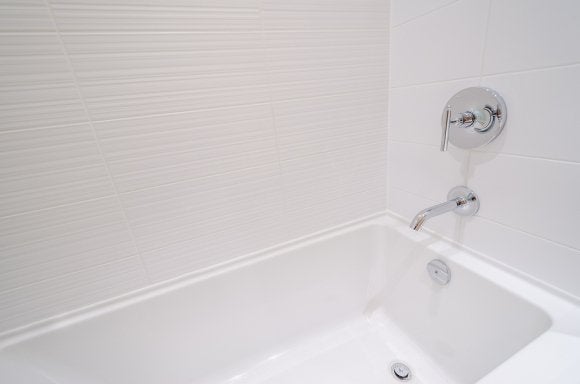
-
Separating the Myths from the Facts About Asbestos Exposure
If you have asbestos in your home, you should seriously consider removing it because of the dangers associated with exposure. You should also take the time to educate yourself more about asbestos so that you can make an informed decision about it. It’s essential to have asbestos testing in San Francisco done to determine whether immediate asbestos removal is necessary. Here are some common myths and facts about asbestos.
Myth: Companies that used asbestos products many years ago were unaware of the dangers associated with them.
Unfortunately, this is not necessarily the case. While there were some companies that didn’t know how harmful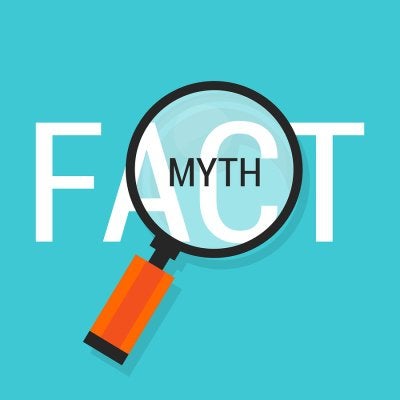 asbestos could be at one time, there were also many industry leaders that reportedly knew about the health risks associated with asbestos and tried to downplay them.
asbestos could be at one time, there were also many industry leaders that reportedly knew about the health risks associated with asbestos and tried to downplay them. Myth: The only health risk associated with asbestos is mesothelioma.
Mesothelioma is the disease that most people associate with asbestos exposure, however, lung cancer, asbestosis, and COPD are some of the other diseases that have been proven to plague those who have come into regular contact with asbestos. These diseases can take time to develop and symptoms from them may not show up for years after asbestos exposure.Myth: Asbestos is no longer used to manufacture items in the United States.
The U.S. government stepped in back in the late 1980s and banned the use of asbestos in building materials and many other products. Asbestos is still used in some products , though, including automobile components, clothing, and even some construction materials.Myth: Asbestos should be removed from homes as soon as it is detected.
If you have an asbestos test done and it reveals that you have asbestos located inside of your home, you should definitely consider removing it to avoid asbestos exposure and the health risks that come along with it. But asbestos is only dangerous to you when the materials that contain it are damaged. Therefore, you should speak with a company that can remove asbestos to see what the best course of action is and how quickly you will need to get rid of it. -
What You Need to Know About Asbestos
If you ever experience asbestos exposure , it could be very hazardous for your health and cause serious problems for you down the line. Asbestos fibers that were once used to manufacture everything from drywall to ceiling tiles can enter your lungs if they are disturbed. Watch this video to find out the things you need to know about asbestos exposure and the dangers poses by asbestos.
Before you do any work in your home or agree to complete a project in someone else’s home or business, you should have an asbestos test done. The test will tell you whether or not asbestos is present. If it is, you should have it removed by a professional to ensure that asbestos exposure does not take place. Look out for asbestos symptoms if you feel you may have come into contact with it. Asbestos testing companies in San Francisco can recommend the appropriate remediation steps if asbestos is found inside your home.
-
Lead Paint and Your Health
Lead paint can be extremely problematic for men, women, and especially children, which is why you should consider having a lead survey done on your home to detect the presence of lead. Federal regulations didn’t restrict the use of lead paint until 1978, meaning many older homes still have it. You should strongly consider lead testing near San Francisco to see whether or not lead is present in your home. Here are some of the ways that lead paint can affect those in your family.
Health Hazards for Children
If lead paint or lead dust is present, your children could be very susceptible to the dangers of lead exposure. This is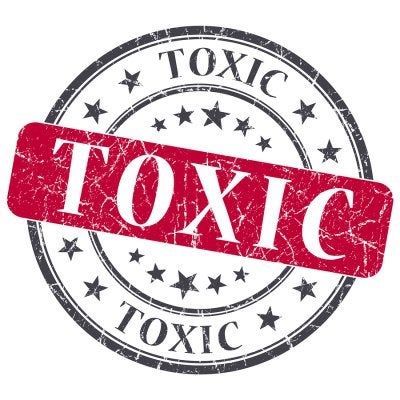 because children’ nervous systems are typically more sensitive than adults’ nervous systems. Lead exposure can lead to kidney damage, behavioral and learning problems, stunted growth, and hearing issues in children.
because children’ nervous systems are typically more sensitive than adults’ nervous systems. Lead exposure can lead to kidney damage, behavioral and learning problems, stunted growth, and hearing issues in children. Health Hazards for Adults
While adults are less prone to experience lead poisoning than small children, they can still feel the effects of lead exposure. Lead exposure can lead to high blood pressure, memory problems, muscle and joint pain, nervous system disorders, fertility issues, and more in adults.Health Hazards for Pregnant Women
Pregnant women should never be exposed to lead. If lead enters their systems, they can pass it along to their unborn babies. This can lead to premature births, brain and nervous system damage, and lower birth weights. Lead exposure can also cause permanent damage to babies.Protecting Your Family
The only way to know if your home has lead inside of it is to have a lead survey done. A lead paint test can determine whether or not the interior and exterior of your home was ever painted with lead. If it was, you can then decide how to treat the walls of your home accordingly to prevent lead poisoning from taking place. It’s very important to test for lead before it is too late.
RECENT POSTS
categories
- Uncategorized
- Lead
- Mold
- San Francisco Mold & Asbestos Removal
- Indoor Air Pollution
- Mold Remediation
- Asbestos
- Safe Air Fast
- Mold Inspection
- Remediation
- Bacteria Testing
- Asbestos Testing
- Abatement
- Lead Testing
- Sewer Line
- Lead Survey
- Mold Testing
- Air Quality Inspection
- Home renovations
- Allergies
- Renovation Contractor
- Infographic
- lead paint
- Air Quality
- Air Quality Test
- Mold removal
